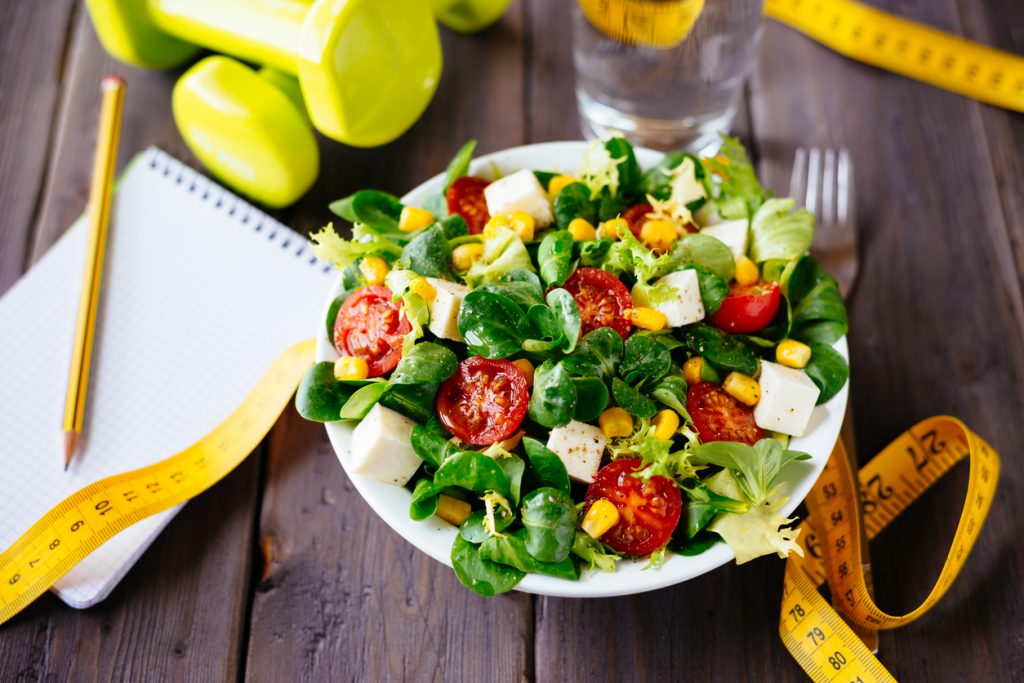People often think that their metabolism is a set thing. That the number of calories you burn in a day is determined by genetics, and it can’t be altered.
That’s just not true.
Your metabolism is comprised of several components, some of which you CAN absolutely change to burn more calories.
What makes up your metabolism? Metabolism is a collection of chemical reactions that takes place in the body’s cells.
It converts the fuel in the food we eat into the energy needed to power everything we do – from moving, to thinking, to having the stamina to keep up with our kids.
RELATED: Learn the weight loss mindset that really works
Metabolic rate refers to the number of calories burned by the body daily, also called Total Energy Expenditure (TEE).
At the end of the day when we talk about what makes up your metabolism, we’re talking about three key components to TEE that are as follows…
What Makes Up Your Metabolism:
1. Resting Metabolic Rate (RMR)
This is the daily energy your body needs to keep functioning. Basically, it’s the amount of energy you use just being alive and breathing.
This is the largest component of TEE, and the one we have the least amount of control over.
If you want to figure out your RMR, you can use a handy online RMR Calculator to get a rough estimate.
Or you can calculate your RMR yourself. You’ll need your height, weight, and age to do the calculations.
Divide your weight in pounds by 2.2 to get kilograms. To calculate your height in centimeters, multiply the inches by 2.54.
For women: RMR = (9.99 x weight in kilograms) + (6.25 x height in centimeters) – (4.92 x age in years) – 161.
For example, a 41-year-old female who weighs 162 pounds at 5-foot, 4-inches tall has a RMR of 1,388 calories.
Build muscle fast! with the My Fitness – Jillian Michaels App. Learn proper form and technique to work your muscles efficiently and get results.
One way to increase your RMR is to increase your muscle mass. More muscles equates to more calorie burn.
We cannot stress this enough, weight training for women is important!

2. Physical Activity (PA)
This is how much you move your body, and it doesn’t just mean exercise.
PA includes all the things you do in a day including housework, fidgeting, walking to work, etc.
When it comes to increasing Total Energy Expenditure (TEE), we have the most control over the physical activity portion of our metabolism.
The more you move throughout the day, the more energy you use, which increases your TEE.
3. Thermic Effect of Food (TEF)
This is the energy needed to break down and use the nutrients in the food we eat.
Basically, your body uses more energy to break down certain types of food than it does for others, which means all calories are not created equal.
Protein burns the most calories, approximately 20-35%, because it is harder to digest. Carbohydrates burn 5-15 %, and fat is usually 5%, but can be up to 15% of calories. Here’s the full equation:
Metabolism (TEE)= RMR (50-65%) + PA (30-50%) + TEF (10%)
While we have complete control over the number of calories we eat in a day, we can only influence about 30 to 50% of the calories burned.
How can you reset your metabolism? Simple math!
- Increase your RMR through strength training
- Increase PA by moving more throughout the day
- Be sure you’re consuming enough protein to get the max TEF

Using RMR to Determine Your Daily Calorie Goals
At the end of the day, eating fewer calories than your body needs to function (meaning fewer than your daily TEE) will result in weight loss.
To lose 1 pound a week, you need to reduce your daily intake by 500 calories.
You’ve already got the first part of the equation, you know what makes up your metabolism.
To calculate the calories you need to maintain your current weight, multiply the RMR you calculated above by your individual activity factor.
- If you do not exercise and have a desk job, your activity factor is 1.2.
- You exercise one to three days a week, your activity factor is 1.375.
- Exercise regularly three to five days a week, your activity factor is 1.55.
- If you’re involved in sports and exercise six to seven days a week, your activity factor is 1.725.
- In training for a marathon or have a physically demanding job, your activity factor is 1.9.
As an example, a 41-year-old woman with an RMR of 1,388 calories who exercises three days a week needs 1,909 calories to maintain her weight: 1,388 x 1.375 = 1,909.
Subtract 500 calories, and this same woman needs 1,409 calories to lose 1 pound a week. Simple math!
Now try increasing your activity factor one level up and see what your daily calorie intake could be.
It might be just the incentive you need to add a few extra workouts into your routine!
When it comes right down to it, weight loss is a numbers game.
You want to boost your metabolism? Understand the effects RMR and physical activity have on your bottom line and make the tweaks necessary to come in 500 calories less than your daily TEE. You’ll see results in no time!
RELATED: The Best Exercises To Lose Weight Fast!
Let your friends know how they can boost their metabolism. Share this article on Facebook and Pinterest by clicking the buttons below.












